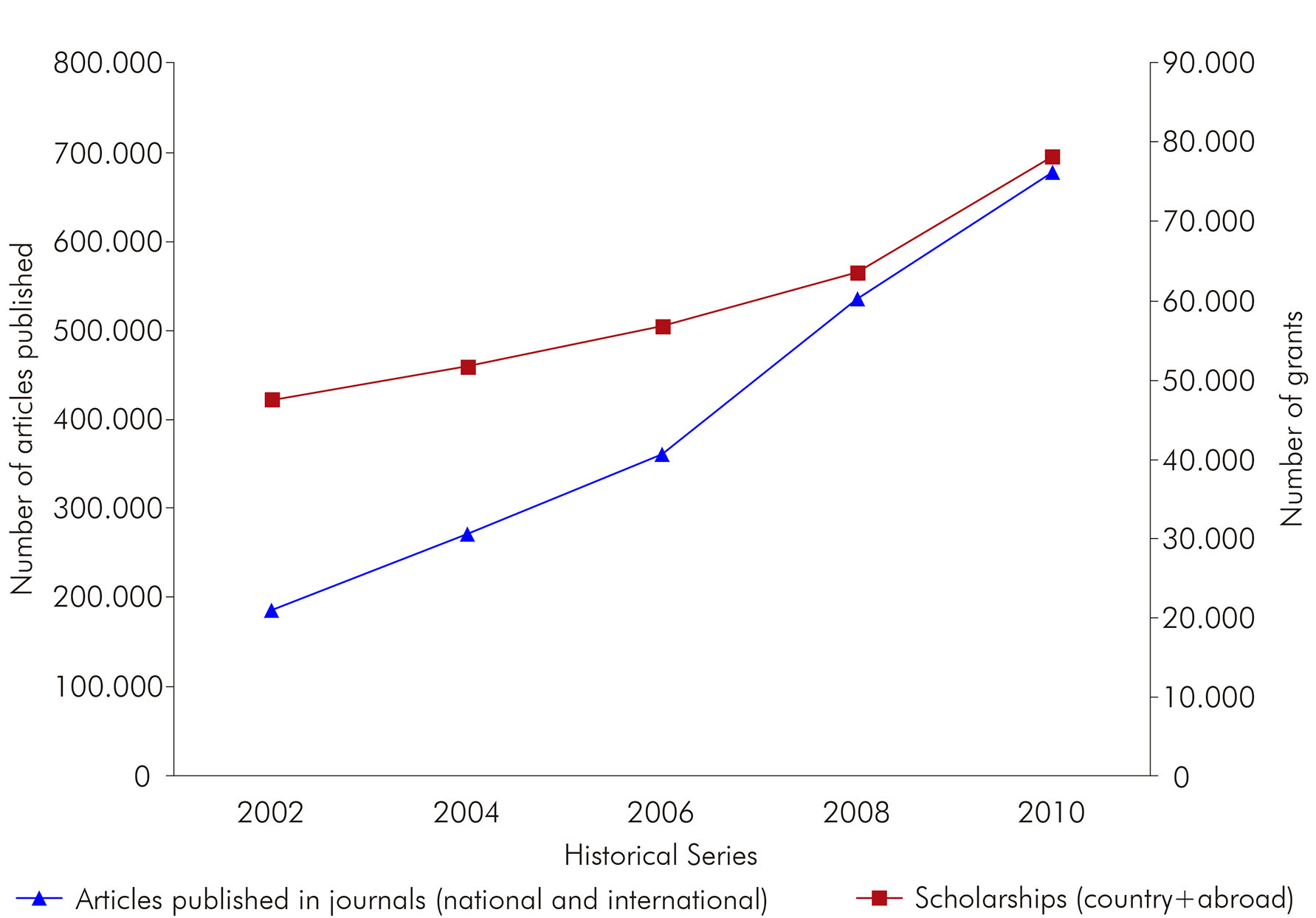Serviços Personalizados
Journal
Artigo
Indicadores
-
 Citado por SciELO
Citado por SciELO
Links relacionados
-
 Similares em
SciELO
Similares em
SciELO
Compartilhar
Revista Pan-Amazônica de Saúde
versão impressa ISSN 2176-6223versão On-line ISSN 2176-6223
Rev Pan-Amaz Saude vol.8 no.4 Ananindeua out./dez. 2017
http://dx.doi.org/10.5123/s2176-62232017000400001
EDITORIAL
Scientific divulgation: responsibility and relevance*
1Instituto Evandro Chagas/SVS/MS, Seção de Meio Ambiente, Ananindeua, Pará, Brasil
2Editor Científico da Rev Pan-Amaz Saude, Ananindeua, Pará, Brasil
3Instituto Evandro Chagas/SVS/MS, Seção de Parasitologia, Ananindeua, Pará, Brasil
4Editora Associada da Rev Pan-Amaz Saude, Ananindeua, Pará, Brasil
Ensuring access to scientific initiation program or undergraduate program is just one step, among many other important ones, for the training of young scientists. After being admitted into those programs, there are great challenges that involve the establishment of a partnership between students and professors, thus good ideas can be transformed into results based on the consensual to develop a work plan. The success of this partnership depends on the feasibility associated with dedication, ethical responsibility and individual initiative that help in overcoming difficulties, essential aspects for the success of and all researches. In this context, there is a gradual knowledge transfer and the development of skills that will be applied continuously in order to improve scheduled activities previously, without overlooking, the possibility of discovering potential talents in science, research, technology and innovation to the country. At the end, it is expected the development of reports, term papers, monographs, dissertations and theses and, subsequently, scientific dissemination by writing abstracts to be presented at special events or meetings, and articles published in journals with peer review, emphasizing that both may have regional, national and international publications.
In recent years, the availability of scholarships in Brazil and abroad has practically doubled (from 47,465 to 78,128) and the number of articles published in national and international journals has tripled (from 187,284 to 677,680) (Figure 1). However, the ratio of articles by authors rose from 6 to 8, showing that the increase in average of scientific production per author is still a great challenge. Despite an increase in technological resources and access to information, there have been little production of paper for publications. Therefore, it is really necessary to create also qualitative mechanisms to stimulate scientific dissemination in the country, even knowing that it is a wide and delicate discussion in which we must also consider inherent features in all areas of knowledge. It is emphasized that all authors must be aware and responsible for their production and respective scientific communication. Scientific communication must look after the information quality provided through the clear hypotheses and/or objectives of the investigation, the objectivity of the proposed methods, the appropriate use of statistical analysis, as well as the appropriate use of literature to guarantee the necessary scientific visibility.

Source: National Council for Scientific and Technological Development, 2017.
Figure 1 - Historical series showing the relationship between the promotion of scholarships and scientific production in Brazil
Research and development (R&D) in Brazil faces a harsh reality, with no effective contribution from the private-sector investments, especially when it is compared to reality of the significant investment demands for R&D and science and technology (S&T) experienced by other countries in Latin America and the BRICS, a group composed of Brazil, Russia, India, China and South Africa, with the main objective of expanding the geopolitical influence of its components worldwide. In this context, we can also report on the successful examples of countries such as China and South Korea, nations that have been gradually increasing the investments for R&D and S&T, especially those coming from the private sector, achieving substantial economic impacts as a result of this policy, especially of stimulating business innovation.
It is also evident the necessity to increase the participation of public authorities in investments for R&D, for their actions develop the strengthening international competitiveness, the productivity expansion and job creation2,3.
R&D are main requirements to promote structural transformations in a country, as well as to strengthen the economy and build a more expressive knowledge society with great changes aimed at maintaining the well-being and quality of life of the populations. Therefore, the promotion and financing of science, research, technology and innovation are the basis for the socioeconomic development of any nation.
REFERENCES
1 Conselho Nacional de Desenvolvimento Científico e Tecnológico. Número de bolsas-ano no país e no exterior - 1951-2015 [Internet]. Brasília: CNPq; 2017 [citado 2017 nov 11]. Disponível em: Disponível em: http://www.cnpq.br/documents/10157/287508b3-ee2f-42f9-af37-ff005630610b . [ Links ]
2 Mazzucato M. O Estado empreendedor: desmascarando o mito do setor público vs. setor privado. São Paulo: Portfolio-Penguin; 2014. 320 p. [ Links ]
3 Brito Cruz CH. University research comes in many shapes. In: Weber LE, Duderstadt JJ, editors. University priorities and constraints. Paris: Economica; 2016. p. 131-42. [Link] [ Links ]











 texto em
texto em 


